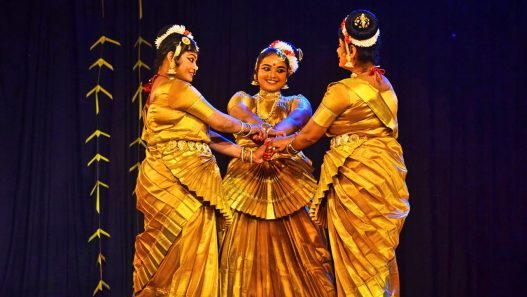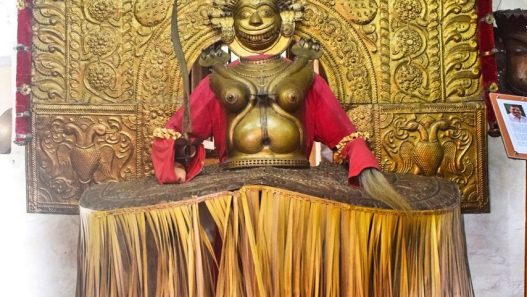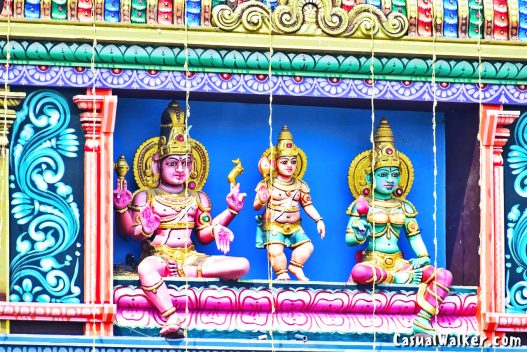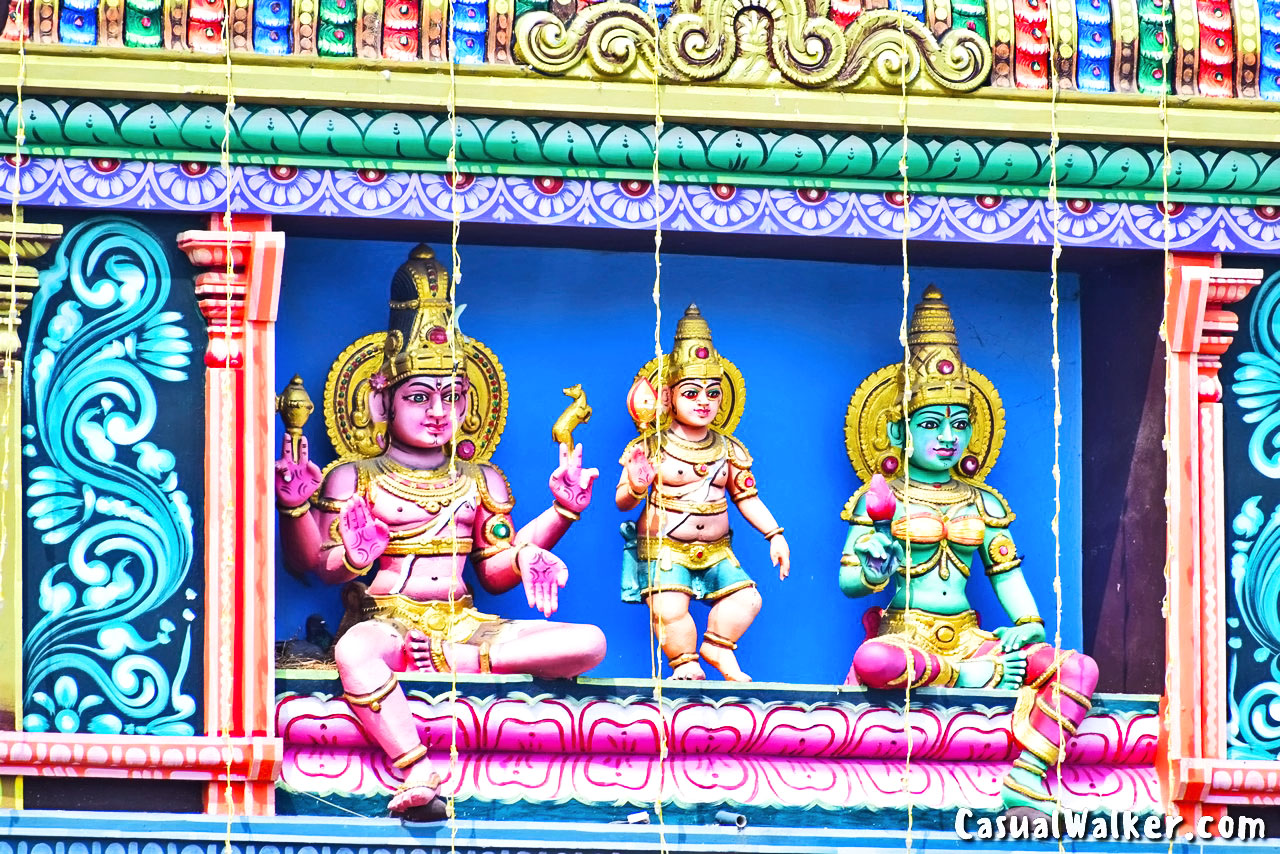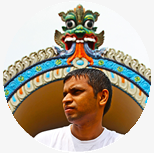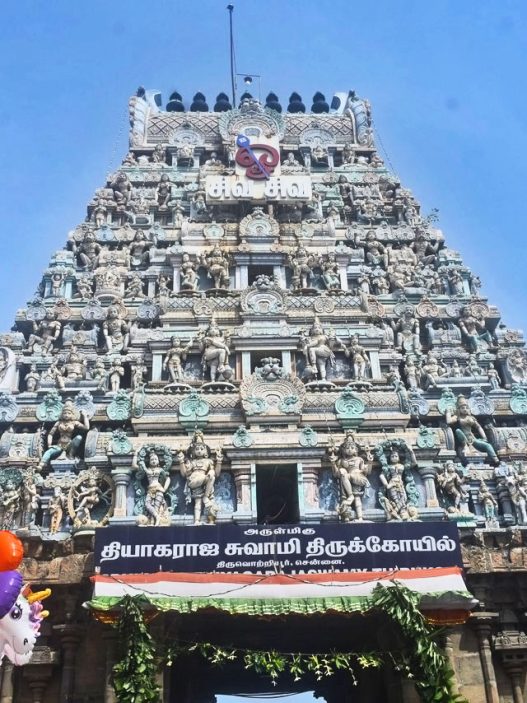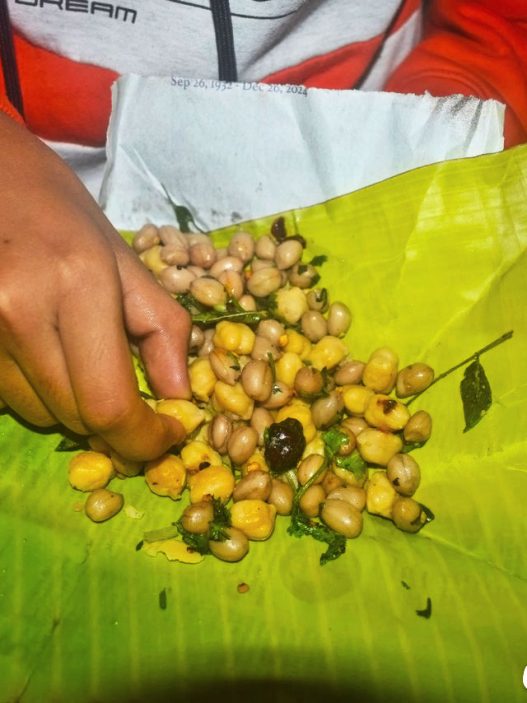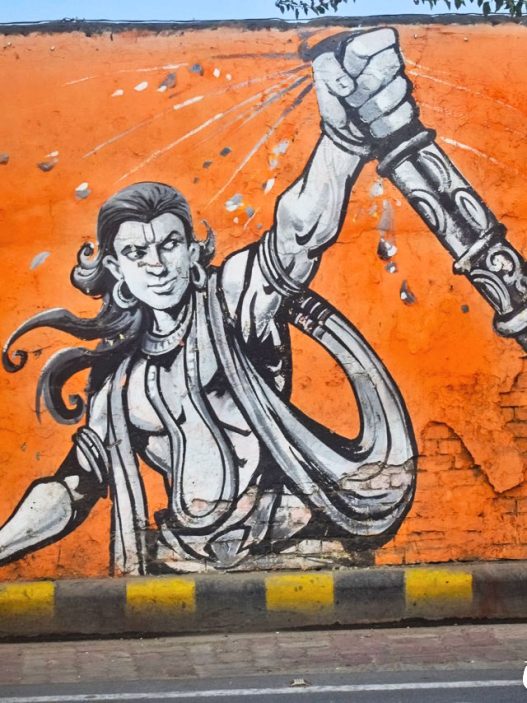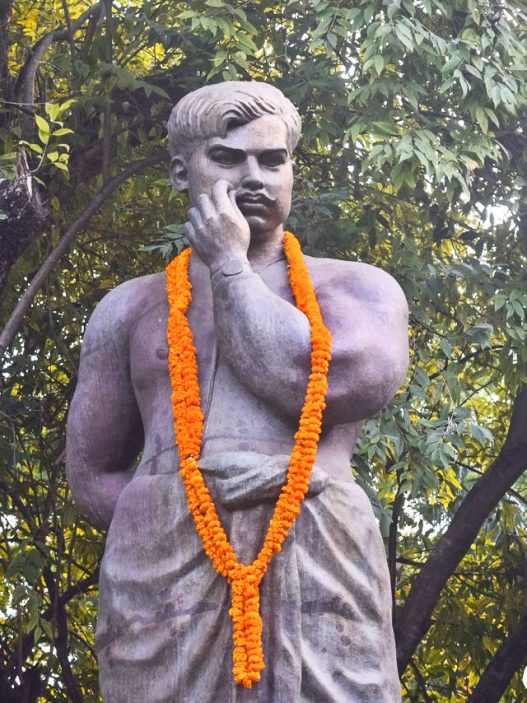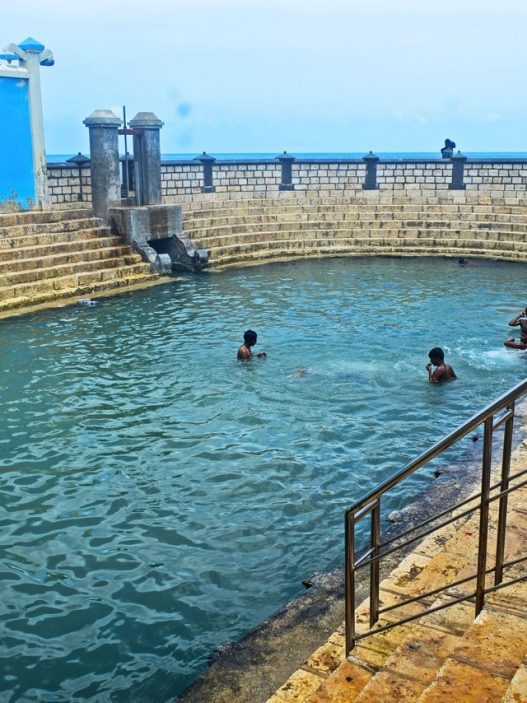Sri Punniya Koteeswarar Temple & Sri Dharma Varthani Temple in Kanchipuram: A 1000-Year-Old Ancient Lord Shiva Temple Where Lord Vishnu & Gajendra, the Celestial Elephant, Worshipped Lord Shiva – Visit, Temple Timings, History, Contact Details, & Travel Guide (Updated)
– a 13th century temple built by raja raja chola
Sri Punniya Koteeswarar Temple / Sri Punniyakotteeswarar Temple/ Sri Dharma Varthani Temple, in Chinna Kanchipuram (Little Kanchipuram), located approximately 4 kilometers from Kanchipuram Bus Stand. What locals call Vishnukanchi at the eastern end of Chetty Street, just south of the famous Varadaraja Perumal Temple. This temple is dedicated to Lord Shiva, built in the 13th century by Raja Raja Chola III, represents not just architectural brilliance but the living tradition of Tamil spirituality, where legends come alive and history breathes through every carved stone.
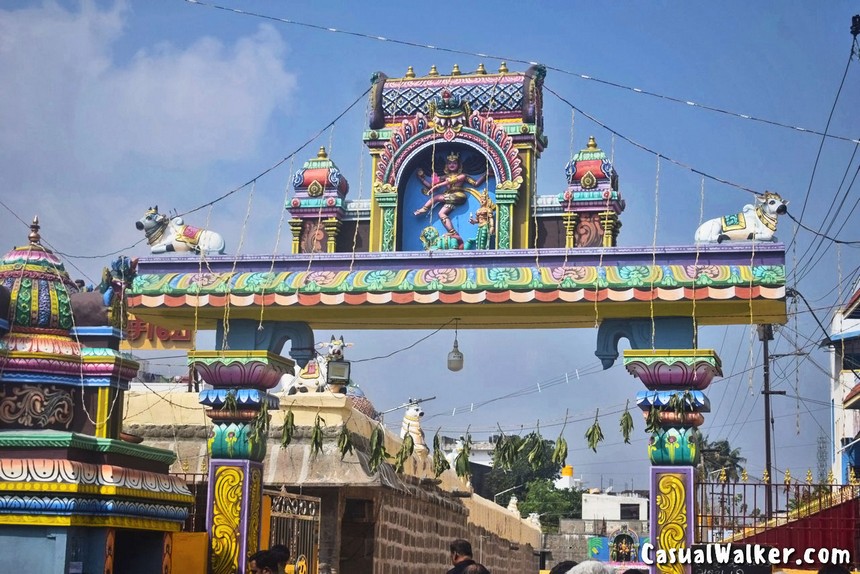
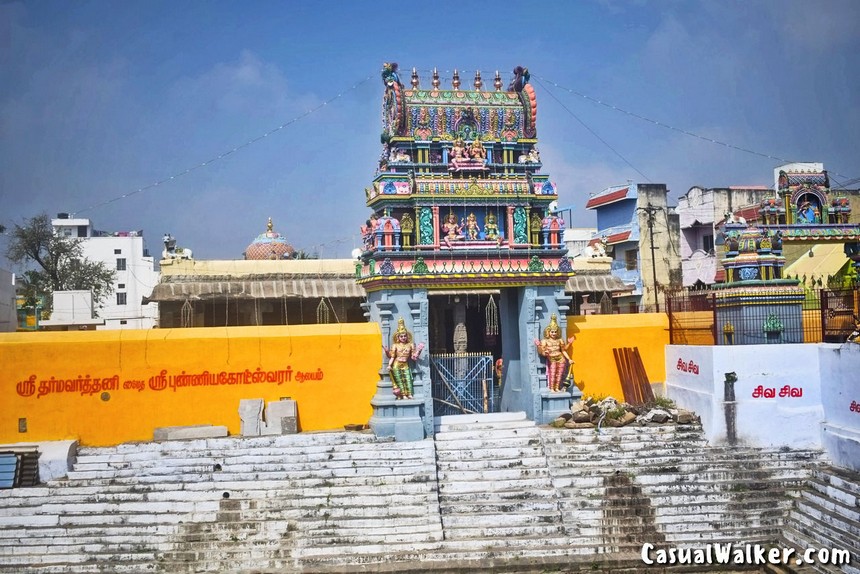
History of Sri Punniya Koteeswarar Temple & Sri Dharma Varthani Temple in Kanchipuram
The temple’s name carries profound spiritual meaning, as shared by the temple priest during my visit. “Punniyakoteesam” translates to “where merit becomes countless” (koti means crore), reflecting the belief that bathing in the sacred tank (theertham) and worshipping the deity multiplies one’s merit manifold.

The temple’s significance is beautifully chronicled in the Kanchi Purana as a separate chapter, detailing how Lord Vishnu and the celestial elephant Gajendra worshipped here. According to traditional accounts, Lord Vishnu appeared in cloud form to support and worship this deity. When Gajendra was caught by a crocodile at Adimoolam, Lord Shiva rescued him with his discus. Grateful for this divine intervention, both Vishnu and Gajendra came to Kanchi to worship at this very spot.
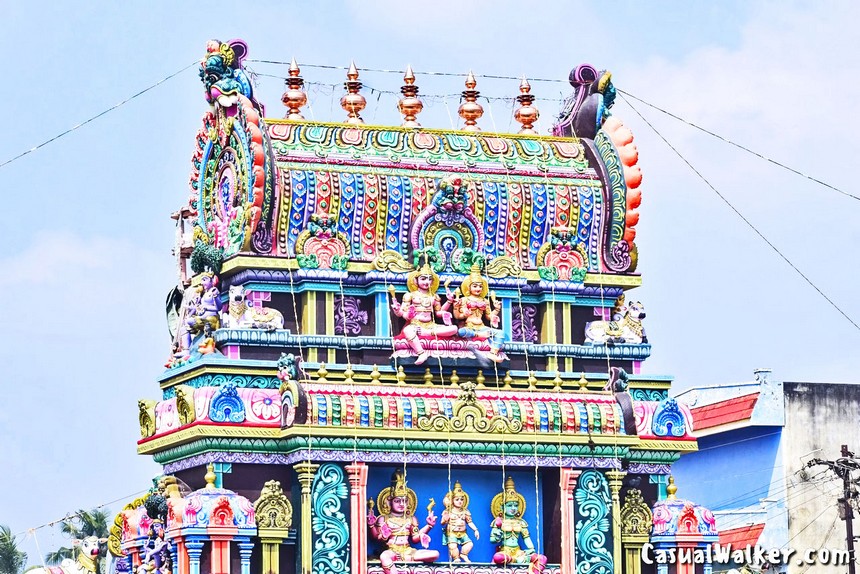
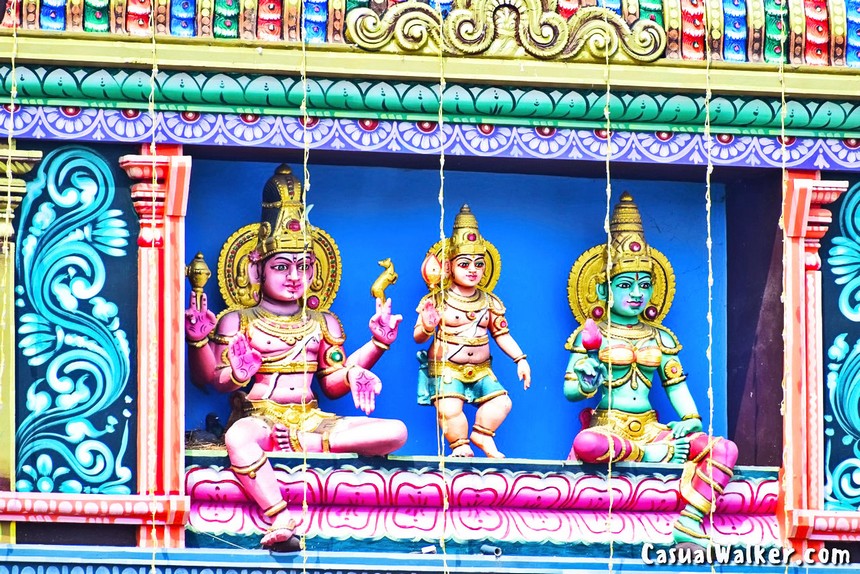
The legend continues that Vishnu, wishing to create Brahma and the fourteen worlds, received help from Gajendra who plucked lotus flowers from the golden lotus pond. After Gajendra’s rescue and subsequent worship of Shiva with flower offerings, the merit earned here multiplied into crores. As Vishnu repeatedly praised the Lord saying “Varada Varada,” he received the sacred name Varadarajan, and the place where he stayed became known as Atthigiri (atthi means elephant).

Unique Form of Shivalinga
At this temple Lord Shiva appears here in a distinctive linga form that differs from most Shivalingas. The base of the Shivalinga here is in a square shape, which is considered an additional special feature. Similarly, there is another belief that touching and offering prayers to the square-shaped linga located to the left side of the deity will bring divine blessings (punya).
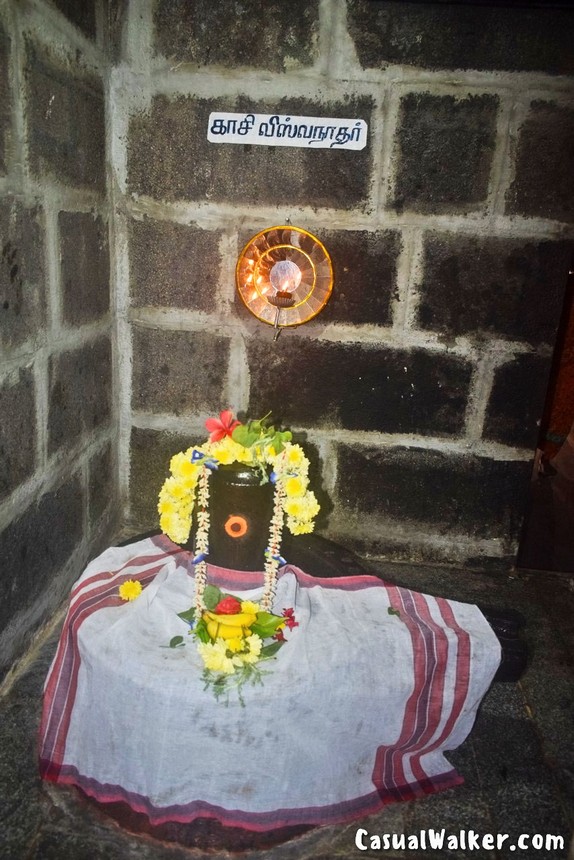
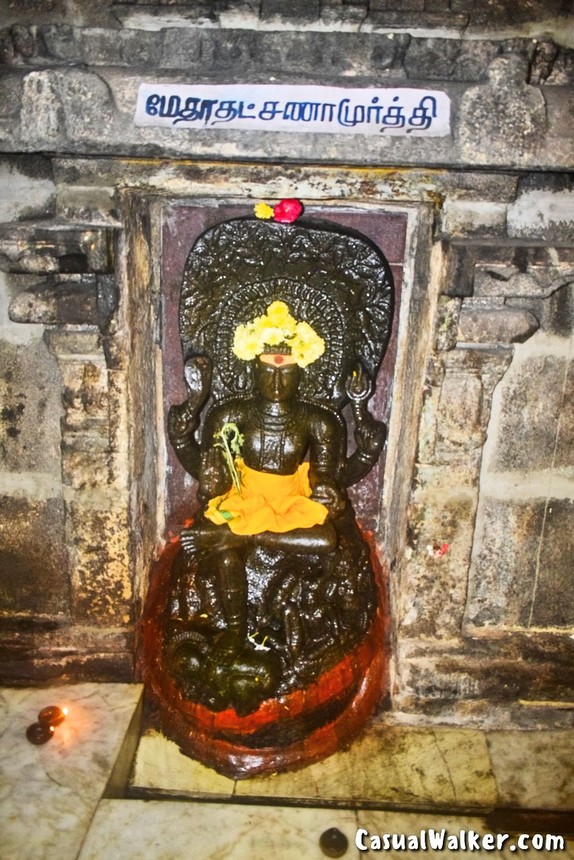
Architectural of Sri Punniya Koteeswarar Temple & Sri Dharma Varthani Temple
The temple presents an understated facade, facing eastward without the towering rajagopuram that typically announces temple entrances. Instead, visitors descend approximately five steps below street level to enter this sunken sanctuary, creating an intimate, almost hidden quality to the worship experience. The sanctum sits approximately 2.5 feet below the inner praharam level, creating a moat-like depression that adds to the temple’s distinctive character and enhances the sense of descending into sacred space.
Architecturally, the temple follows classical South Indian temple design with its sanctum (garbhagriha), anteroom (antarala), and half-hall (artha mandapam). Uniquely, the artha mandapam is accessed from the south rather than the traditional eastern entrance.
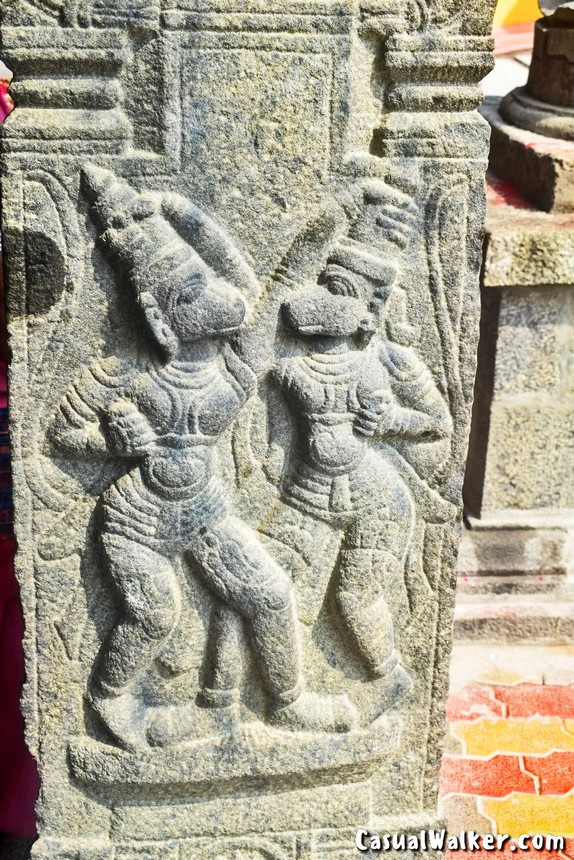

The approach reveals traditional temple elements arranged in proper succession: the dwajasthambam (flag post), palipedam (sacrificial altar), and nandi (Rishabam) positioned before a magnificent mandapam with 26 pillars adorned with intricate sculptures. Built during the Vijayanagara-Nayaka period under the patronage of Kumara Kampana, this covered hall showcases exquisite craftsmanship through its carved pillars and decorated ceiling panels, featuring charming reliefs of fish, acrobatic figures, tortoises, serpents, and the celestial bodies Chandra (moon) and Surya (sun) with their respective vehicles.

Sacred Spaces and Deities in Sri Punniya Koteeswarar Temple & Sri Dharma Varthani Temple
In the sanctum, Punniyakoteeswarar faces east, blessing devotees. The temple houses an impressive array of subsidiary shrines (sannadhis) dedicated to various deities. The main complex includes shrines for Subramaniyar (Murugan with his consorts Valli and Deivayani), Vinayagar, and the Navagrahas.
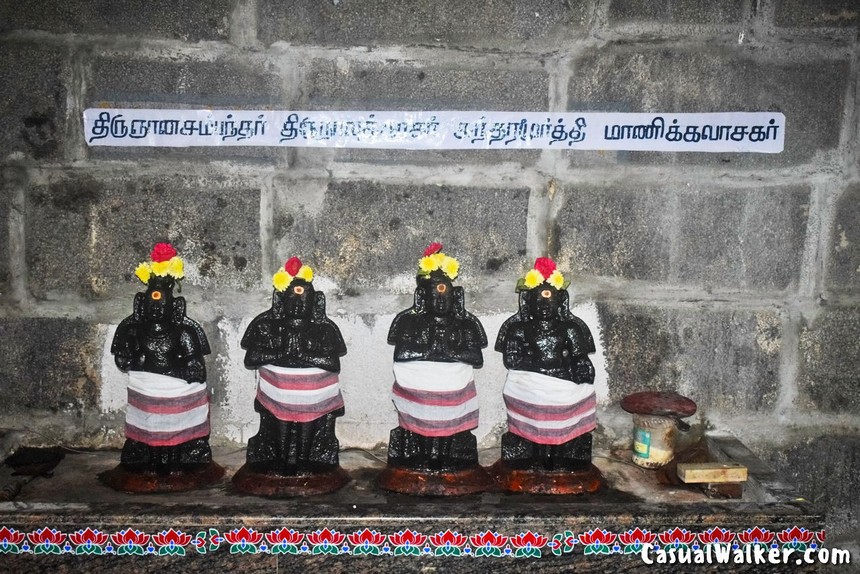
The goddess here is known by multiple names – Buvanap Poongothai, Bhuvaneshwari, and Dharmasamvarthani. The circumambulatory path (praharam) contains additional sacred spaces including shrines for the Naalvar (four Shaivite saints), a Sapthamatha panel depicting the seven mother goddesses, a Kailasanathar Shiva lingam, Saturn (Shani Bhagavan), Nataraja, Ganesha, Bhairava, Hanuman, and Navagraha Krishna.

The temple’s koshtam (wall niches) present a complete pantheon with beautiful sculptures of Vinayaka, Dakshinamukha Devata (Dakshinamurthy), Mahavishnu, Vishnu Durga (Brahma and Durgai), creating a comprehensive spiritual environment for devotees.
Sacred Temple Tree
The temple has a Vilva (Bael) tree as its sacred temple tree (Sthala Vriksham).
What adds poignancy to this temple’s story is its recent revival. Annual chariot festivals were held from 1913 to 1926, then mysteriously stopped for nearly a century. However, on May 13, 2024, this sacred space underwent Kumbabhishekam (consecration ceremony), marking a new chapter in its spiritual journey.

Standing in this sacred space, one feels the continuity of devotion spanning eight centuries. This temple represents where legends of Vishnu, Gajendra, and Shiva converge in stone and story, creating a living testament to Tamil spirituality. Every carved pillar, every sacred shrine speaks of the divine presence that has blessed this sacred ground for over 800 years, making it a truly transformative experience for any devotee or visitor seeking to understand the depth of South Indian temple tradition.
Travel Tips for Sri Punniya Koteeswarar Temple & Sri Dharma Varthani Temple in Kanchipuram
Address of Sri Punniya Koteeswarar Temple & Sri Dharma Varthani Temple in Kanchipuram :
Sri Punniyakoteeswarar Temple, Little Kanchipuram,
43/14, Punniyakoteeswarar Koil St, Nethaji Nagar, Kanchipuram,
Tamil Nadu 631502.
Temple Priest (Gurukkal) Contact Details:
Punniyakodi Bhairava
Sivasri S. Punniyakodi Gurukkal
Phone: 8220649913
Temple Timings
Morning: 6:00 AM to 11:00 AM
Evening: 5:00 PM to 7:30 PM
How to reach Sri Punniya Koteeswarar Temple & Sri Dharma Varthani Temple in Kanchipuram
This temple is located on Punniyakoteeswarar Koil Street in Chinna Kanchipuram (Little Kanchipuram), approximately 4 kilometers from Kanchipuram Bus Stand.
Through Airways : Chennai International Airport (Code MAA) is the nearest Airport To kanchipuram. Have to travel 61km and it takes 1 hour 30 mins to reach the temple.
Through Roadways : Kanchipuram is 75 kilometers Away from chennai and is well connected by a network of roads with other important towns and cities of Tamilnadu
By Rail: The Kanchipuram Railway Station (Code CJ) has regular and direct trains connecting to Chennai, Tirupati, Nagarcoil, Chengalpattu, Bangalore, etc.





